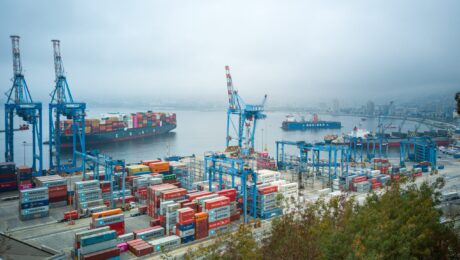Strengthening Cross-Functional Understanding: A Framework for Timelines Vs. Specific Dates
Across several recent conversations and group discussions, the subject of information requirements — necessary for executing critical roles in product development, manufacturing, and supply chain — has come up again. Over the past several years, we have built a simple yet powerful framework to address the recurring challenge of obtaining critical information at the right
- Published in LIFE SCIENCE, Project Management Blogs, Supply Chain Management Blogs

Making the Case for Clinical & Operations Planning (C&OP) in Clinical Supply Chains
The Clinical Supply Chain Situation In the world of bringing a pharmaceutical product to market, supply chains play a vital and multifaceted role, ensuring the seamless flow of materials, timely delivery of products, and adherence to regulatory requirements across complex global networks. A McKinsey study states, “…On-time delivery generally is not a problem. On-time, in-full
- Published in LIFE SCIENCE, Supply Chain Management Blogs
Inventory Management Using The Power Of Analytics
Supply Chain executives, leaders, and personnel often find themselves not knowing what inventory they have, where it is, and when it expires. The list of what-ifs can be quite daunting. Despite the criticality of the answer to these questions, that information is not at the fingertips of executives, leaders and personnel. Needless to say, this
- Published in client case, LIFE SCIENCE, Supply Chain Management Blogs
How to increase supply chain agility?
Whether it is a global pandemic, trade wars, geopolitical instability, tariffs or natural disasters, these disruptions make a significant impact on supply chains globally. With such unpredictable disruptions, companies must invest in building key capabilities in their supply chains i.e. agility, resilience, and sustainability. Here we will talk about how to increase supply chain agility
- Published in Supply Chain Management Blogs
Optimum Material Requirements Planning (MRP) – How to get it right?
Material Requirements Planning (MRP) is one of the most important processes for manufacturers that should be run at the right frequency. With the right MRP, an organization can expect an increase in on-time shipments, lesser inventory carrying costs, lower inventory shortages, and happy customers. Whether it is done through the ERP (Enterprise Resource Planning) system,
- Published in Supply Chain Management Blogs
Fixing your supply chain challenges in 2022 and beyond
The year 2021 saw supply chain issues getting worse due to the ongoing COVID-19 pandemic. For instance, the computer chip shortage had a ripple effect across various industries. There were concerns raised about everything from restaurant food supplies to coffee shortages to lithium supply for electric vehicle batteries. Supply chain issues have never been so
- Published in Supply Chain Management Blogs
Effective contingency planning in project management
Contingency planning is all about having a backup strategy for your business in case of any unforeseen events that may knock off your plans off track. Every project undertaken in a business has a unique set of risks, therefore when project managers carry out a risk assessment and identify potential threats, a proactive backup plan
- Published in Project Management Blogs
Effective network planning in supply chain management – It’s vital!
Network planning in supply chain management is a complex task that involves coordinating different individual companies, integrating several processes and activities in the supply chain network to improve the value of products or minimize system-wide cost while satisfying the demand of consumers. What is network planning in supply chain management? Supply chain network planning is
- Published in Supply Chain Management Blogs
Project Management Resources – Cost Benefit Analysis for projects
When you are managing a project, invariably you have to weigh one option against another. A cost benefit analysis is the easiest way of comparing all your options to determine which will be the right one for your project. What is Cost Benefit Analysis? CBA or Cost Benefit Analysis is an efficient technique that is
- Published in Project Management Blogs
Getting started with a career in supply chain management
Looking for a career in supply chain management? You are not alone, especially now when the COVID-19 pandemic has raised awareness about the global importance of this crucial sector- and has shown it to be a great career option. Supply chains involve a series of processes that takes a product from the manufacturer to the
- Published in Supply Chain Management Blogs
- 1
- 2










